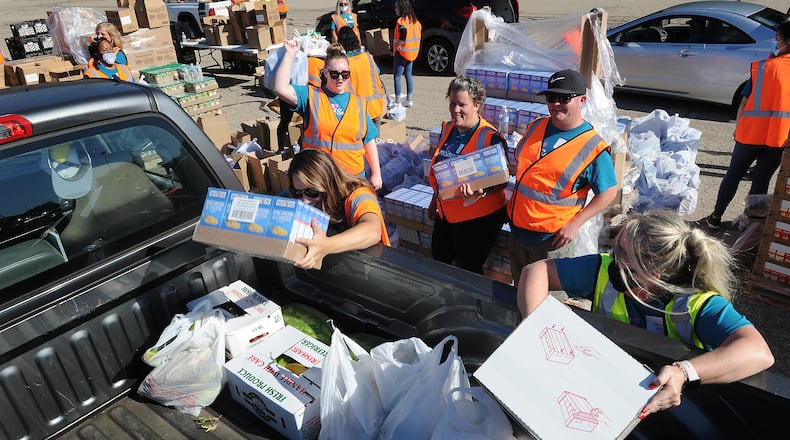The ugly numbers only tell part of the tale. We all see the higher gas and food prices and hear stories of people cutting back. We see those dollar store prices increase dramatically.
Most of us don’t see the hunger a base economy causes.
The Dayton Food Bank does.
It’s serving more people, spending more on gas for its trucks, and watching its expenses rise while doing its best to make sure the most the food insecure have something to eat.
“It just takes one large cooling bill, one medical expense, one car breakdown, a global pandemic, whatever that situation might be, for people to find themselves without the ability to feed their family or themselves,” Lee Lauren (Alder) Truesdale, the chief development officer of The Foodbank, said.
I began wondering about how the economy impacts hunger when I came across some of the Food Bank’s numbers.. More than 100,000 people in the Food Bank’s Montgomery, Green, and Preble county service areas suffer from food insecurity, and children account for about 31,000 of those.
People tend to tie food insecurity with poverty, so they immediately think of the city of Dayton. And while it is true that Dayton has one of the highest poverty rates in the nation, living in the suburbs doesn’t make people immune to hunger.
The Food Bank, for example, sends out mobile food pantries to local communities that don’t have an existing food pantry or hunger relief organization. “They’re suburban communities, like Englewood and Vandalia,” Alder said. “We have some that are in Jamestown, Xenia, and Fairborn. These are communities where people don’t always think about hunger.”
The economy will make matters worse. “As inflation becomes a larger problem, gas prices continue to remain high, food costs continue to rise, and as we are heading toward what we all are hearing is absolutely a recession, we’re going to see hunger continue to grow in our suburban communities as well,” Alder said.
The Food Bank, in its fiscal year ending June 30, averaged 4.86 visits per household --- the highest in three years --- and served more than 453,000 meals, an incomplete number since three of its partner agencies use a different system to track data.
Additionally, the Food Bank budgeted $600,000 for wholesale food purchases and had already spent $977,000 by the end of April. No wonder. Its wholesale food costs more than doubled, from $0.53 cents per pound to $1.07 per pound at the end of April. The agency has also spent at least $10,000 more on gas for its trucks.
So that’s the lay of the land. What can we do to help?
There are a couple of things. The Food Bank depends on volunteers, and just a few hours a week make a difference. We can also help by keeping our neighbors in mind.
“If you’re going to a food pantry and you plan on driving, maybe check in with a neighbor and ask if they want to go with you. That’s a great saving for individuals
I know it seems like the world is on fire but we should always take a step back from the daily insanity and figure out how we can be better people. Helping feed the community, through donations or volunteering, goes a long way for those in need.
In the richest country in the world, no one should go hungry.
Ray Marcano’s column appears each Sunday on these pages. He can be reached at raymarcanoddn@gmail.com
About the Author

